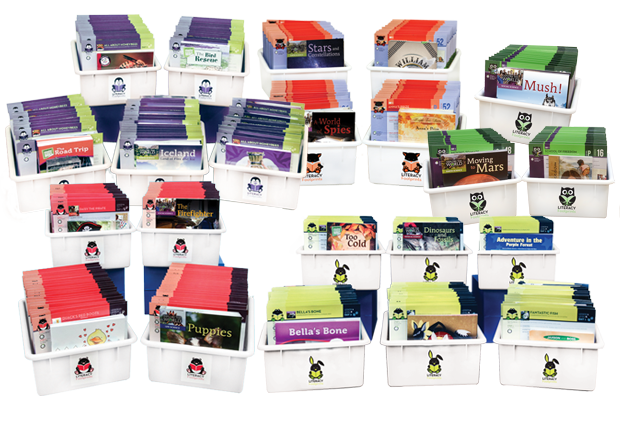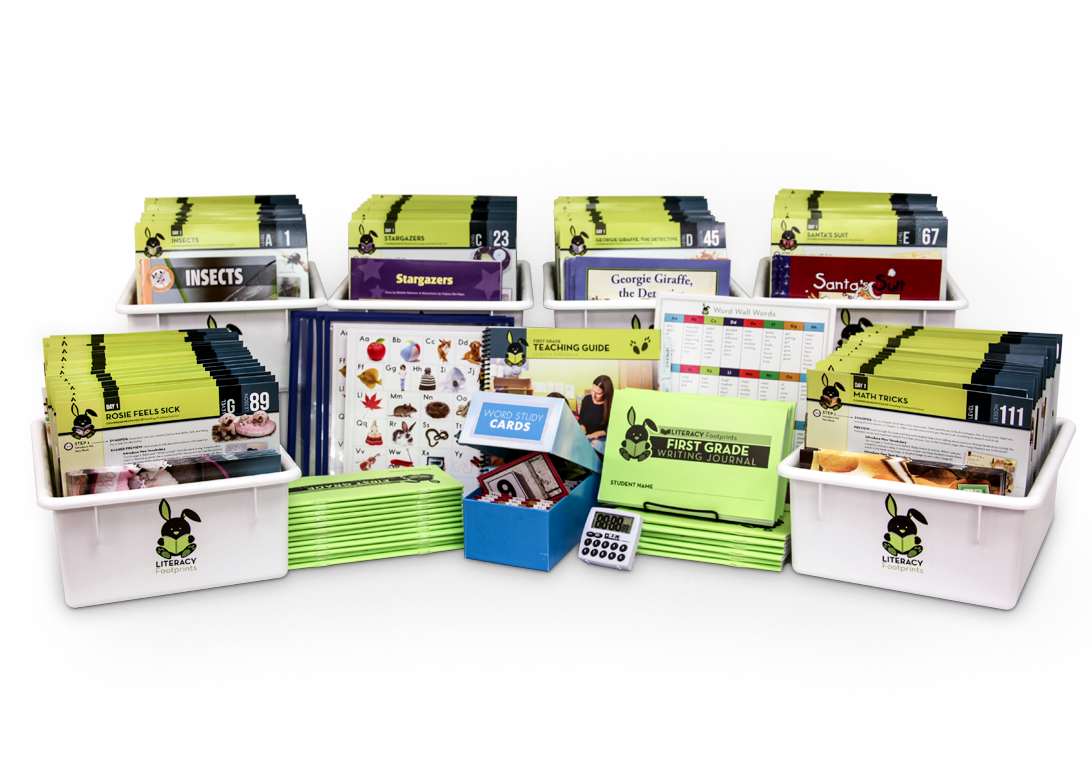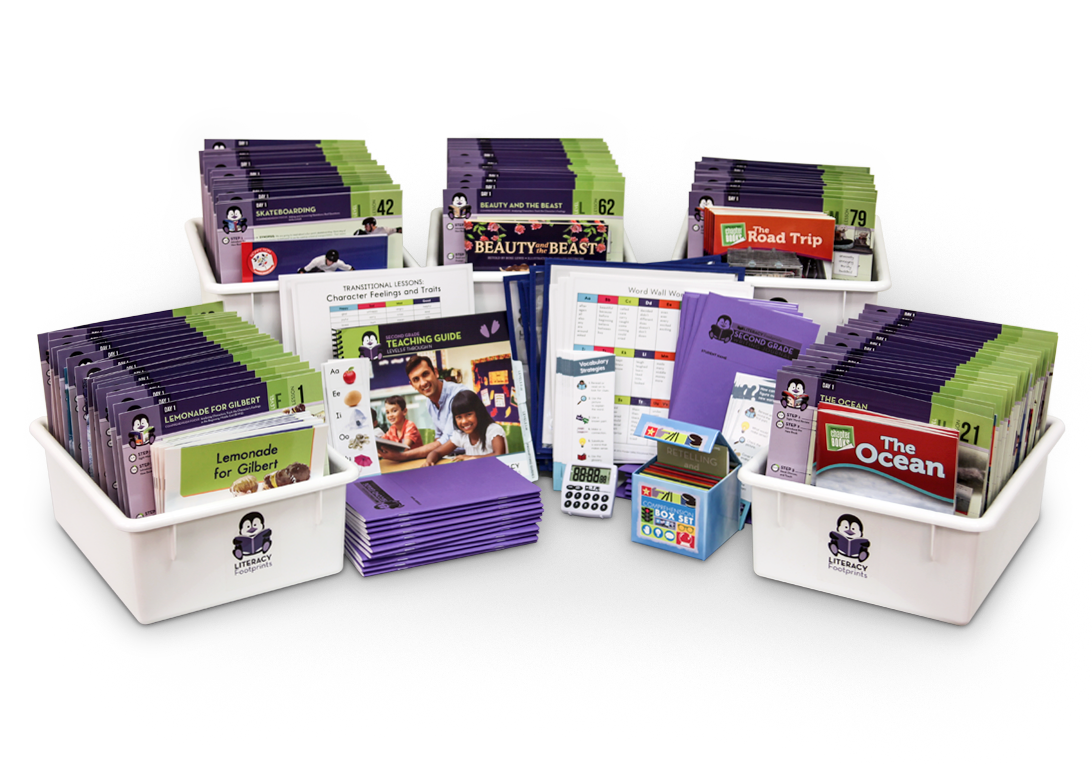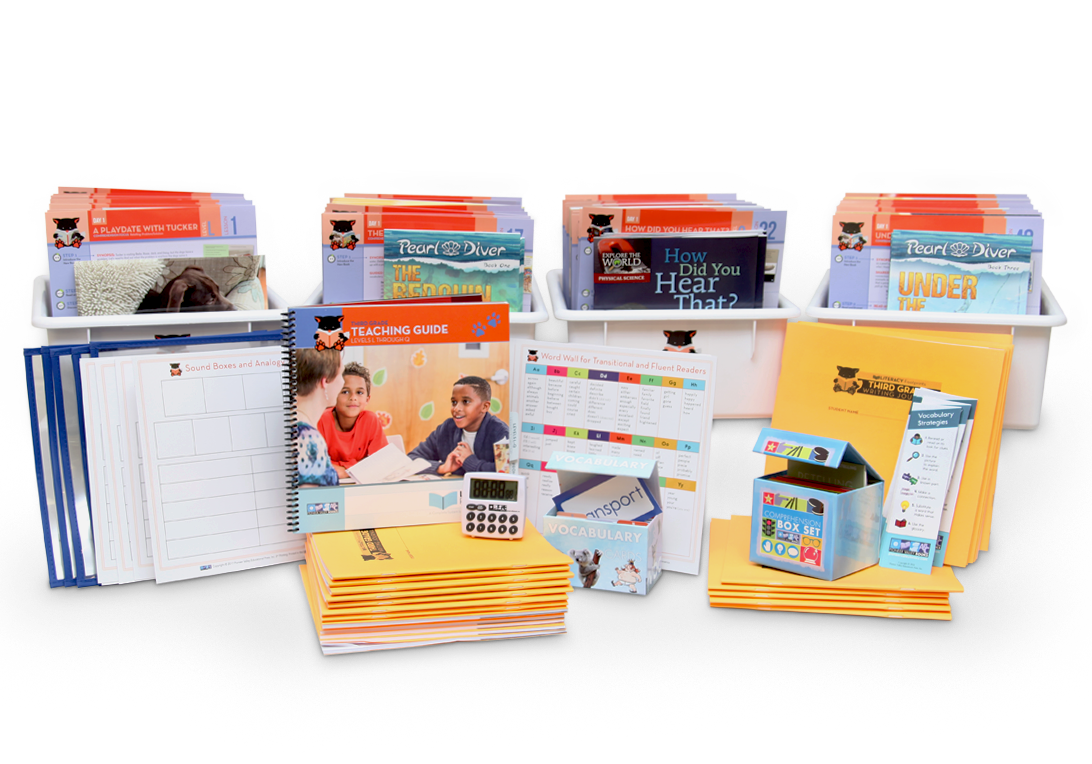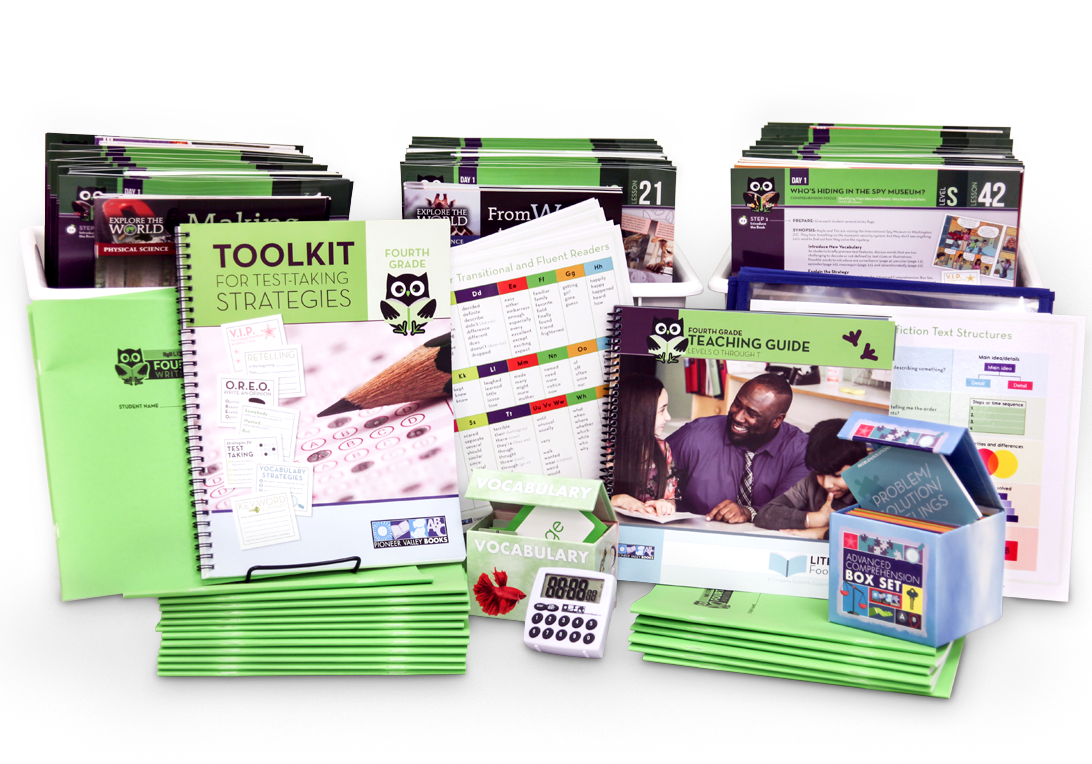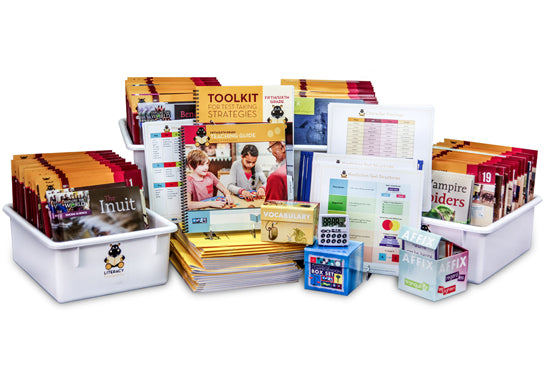Classroom Kits
The Science of Teaching Reading and the Literacy Footprints Guided Reading System
Download PDFSmall-Group Differentiated Instruction
Students come to school with varying experiences and knowledge. Therefore, it is critical to provide targeted instruction to ensure the success of all readers in the classroom. Rather than whole-class phonics instruction, which assumes all students have the same instructional needs, the Literacy Footprints Guided Reading System features a small-group format. This gives teachers ongoing opportunities to observe, assess, and record each student’s progress. With only four to six students at the reading table at a time, teachers can use this data to determine instructional needs, shift priorities, and provide targeted instruction in real time.
Explicit and Systematic Instruction in Phonics
The Literacy Footprints Guided Reading System provides an approach to phonics instruction that is unique from other guided reading systems. The lessons include explicit and systematic phonics instruction using multisensory tactile materials. Students are taught phonics skills within a framework developed from a research-driven phonics scope and sequence. Across the system, students acquire skills in mapping sounds to letters. They also learn spelling patterns and the sounds that they represent.
The Use of Instructional Text
As students acquire critical phonics skills, they need to learn to apply those skills to authentic reading. The Literacy Footprints Guided Reading System uses engaging texts intentionally curated so that students can transfer their knowledge to reading. Each book has been carefully sequenced to provide students with opportunities for successful decoding. The books also help students build a core bank of sight words that in turn supports reading fluency. Unlike decodable texts, the books used in Literacy Footprints utilize accessible content words to create natural language combined with a systematic release of decodable words and sight words. Students are given the appropriate amount of supports and challenges so that they can progress within their zone of proximal development. Here’s how this works as the levels advance:
- Level A and B books feature patterned text, which provides the most novice reader with opportunities to develop early concepts of print, a small core of sight words, and some very early decoding skills (such as recognizing and using the first letter sound in words).
- Beginning at Level C, each text is designed to support students in using a combination of sight words and decoding skills. While there are beautiful illustrations to enhance the reading experience and extend the meaning, the text is not patterned, and students cannot guess at words. In fact, the text has been carefully written to give students opportunities to practice decoding skills as well as gain meaning from the story.
Comrehension: Building Knowledge and Applying Strategies
The books created for the Literacy Footprints Guided Reading System provide students with access to engaging and conceptually rich text, both fiction and informational. Lessons are built around comprehension strategies that help students gain a deeper understanding of textual meanings and nuances. These strategies in turn support the type of reading that’s essential for students to build knowledge of the world. Using a gradual release framework, teachers model a new comprehension strategy and then support students as they practice that strategy with text to support the new learning.
Guided Writing
Research has shown that writing is a powerful tool for learning readers. The Literacy Footprints lessons include a guided writing component that builds student encoding skills. In early lessons, the teacher dictates one or more sentences specifically crafted so students can practice sight words and the phonics element that has been taught in the lesson. As students become more proficient at writing, they begin to write longer pieces in response to their reading. At this point, the writing allows students to use critical thinking skills and extend their understanding of the text.
